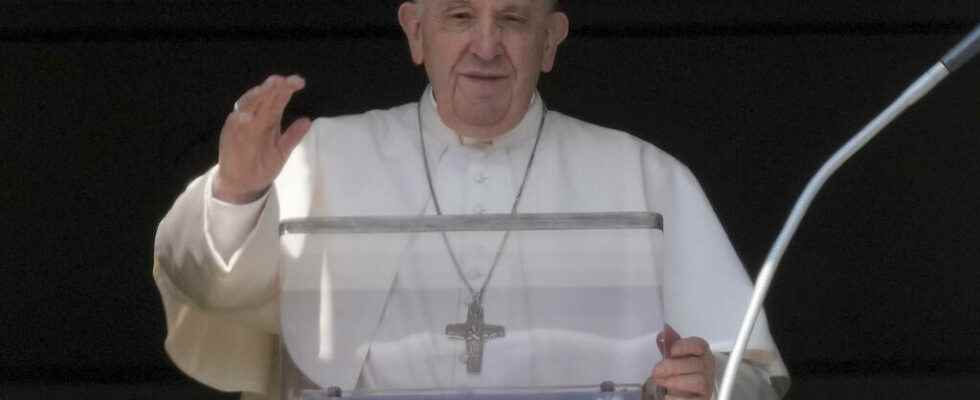On March 19, a new Apostolic Constitution was published, setting new rules for the functioning of the Curia, the central body of the Catholic Church. Between the desire for decentralization and the fight against clericalism, this document, the fruit of nine years of work, is one of the last major projects of the pontificate of Pope Francis.
From our correspondent in the Vatican,
Pope Francis loves symbols. On March 19, nine years to the day after his enthronement on the pontifical throne, the Argentine pontiff published Praedicate evangelium, (“To announce the Gospel”), the new Apostolic Constitution which renews the regulations of the Curia. A document that some in the Vatican no longer expected, as the birth was difficult, but which will remain a major text of his pontificate. This Constitution, which must enter into force on June 5, the day of Pentecost, is the ” new general regulations » internal to the Church, which determines the functioning of the various organs of the Curia, starting with the « dicasteries », the main departments of the smallest state in the world, a kind of « ministries » in the Vatican.
The document was in germ from the beginning of the pontificate of Argentina, who succeeded a Pope Benedict XVI crushed by the weight of scandals and blockages of the Curia. During the meetings before the conclave of March 2013, during which the cardinals exchange on the priorities that they wish for the Church and the future pope, many of them had expressed the wish for such a reform. The last Constitution, Pastor bonusdated from John Paul II who had promulgated it in 1988.
Rome is no longer the center of the world
“It is a major text that contains many orientations, for certain prophetic so that the Church exercises its mission in the world of today », according to Bishop Patrick Valdrini, Emeritus Professor of Canon Law at the Pontifical Lateran University in Rome. With this text, Francis transforms the Curia and “better, requires a form of conversion”, explains this expert.
One of the main threads of this new 54-page document is decentralization. It was indeed in the mind of the pope of to show that the Curia is not a simple Roman administrative apparatus but is indeed at the service of the mission of the Church: to announce the Gospel. This decentralization has already been seen in the creation of the “Council of Cardinals” that Francis had set up in April 2013, responsible for preparing this reform, and composed of prelates from the five continents.
“ The pope is looking for this Curia to correspond exactly to what he wants his pontificate to be »,underlines Archbishop Valdrini, evoking terms already heard in recent years such as “sobriety” Where “ transparency ». In fact, this new Constitution comes to complete the reforms already initiated during the pontificate, as in financial matters, where Francis had rationalized the costs and audited the finances of the Holy See.
An openness to lay people
Another major novelty is the place given to lay people. ” All faithful can preside over a dicastery or an organization “, can we read in this Constitution. So far, the different sections of the Curia – with the exception of communication – are headed by bishops or cardinals.
“It is clearly written that the power of government in the Church does not come from the sacrament of orders, from the priests “, says Father Michel Kubler, former religious editor of the daily The cross. ” From now on the Pope delegates so that we do the work in his name ». This Assumptionist religious, now based in Rome, evokes ” an ecclesiological paradigm shift that overturns the functioning of the Curia as it has been for centuries “.
Praedicate evangelium bears the imprint of Francis. To fight against any careerism at the heart of the Church, he has now set five-year terms at the head of the Vatican dicasteries, renewable only once. Another notable change is the creation of a ” dicastery of charity one of the key themes of his pontificate. Until now, the Apostolic Chaplaincy was responsible for organizing aid to the poorest, often in Rome. From now on, charity has the rank of “ministry” and aims to be more universal. ” The purpose of the Church is to announce the Gospel and not to oversee faith and morals », emphasizes Father Kubler.
With this Constitution, Pope Francis comes to close one of the last major projects of his pontificate. It now remains for it to be put into practice, to give the lie to an adage too often heard in Rome: “ The Popes pass, the Curia remains “.
